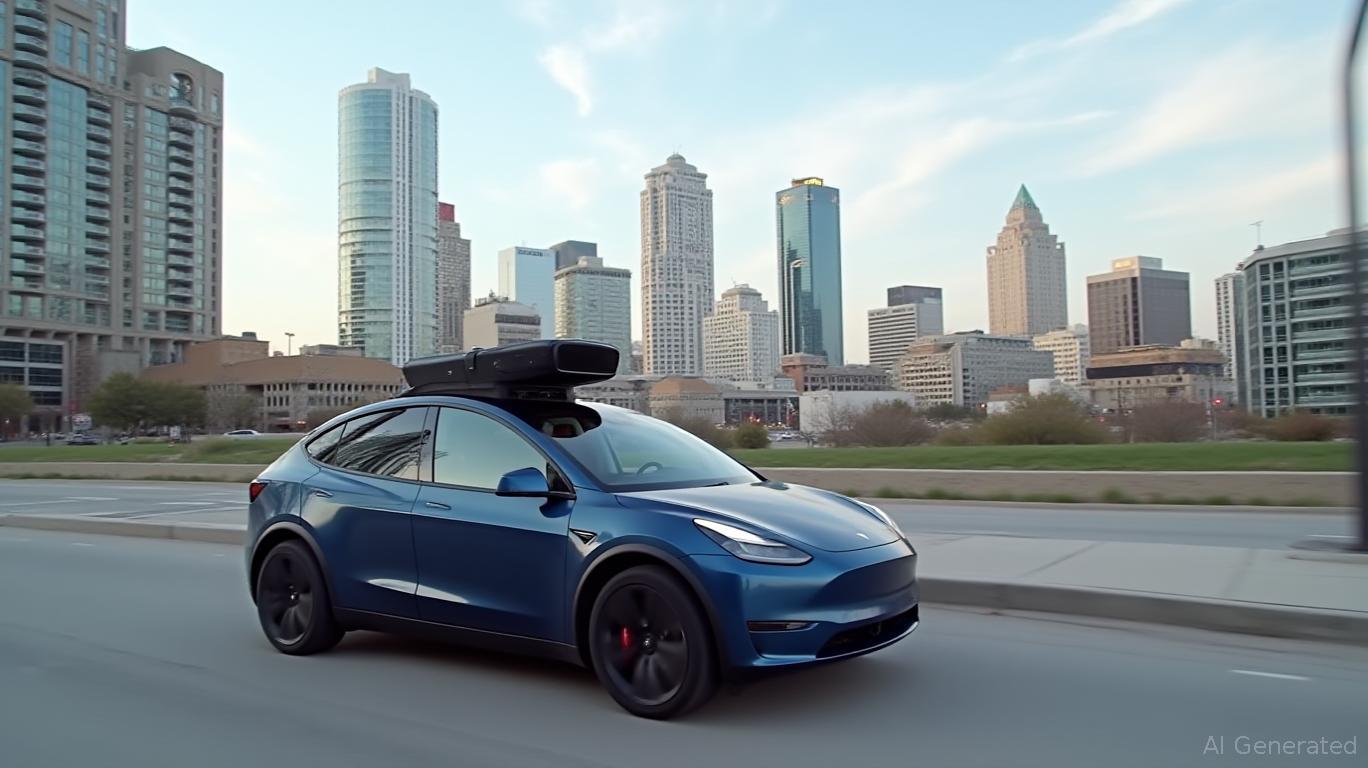Tesla's Robotaxi Rollout: A Catalyst for Autonomous Mobility Dominance
The launch of Tesla's Robotaxi service in Austin, Texas, on June 22, 2025, marks a pivotal moment in the evolution of autonomous mobility. While the initial deployment of just 10–20 Model Y vehicles operating within a tightly controlled geofenced area may seem modest, this rollout represents a meticulously calculated first step in Tesla's bid to dominate the $1 trillion autonomous vehicle market. By leveraging its proprietary camera-based Full Self-Driving (FSD) technology, vertical integration, and Texas's regulatory flexibility,
is positioning itself to scale rapidly while mitigating execution risks. For investors, the question is clear: Does this strategic gambit justify Tesla's valuation, or is it a high-stakes gamble?
Strategic Positioning: Cost Efficiency and Vertical Integration
Tesla's decision to forgo lidar in favor of an 8-camera vision-based system is both a risk and a strength. Competitors like Waymo rely on lidar for 3D mapping, but Tesla's approach reduces hardware costs by $13,500 per vehicle, a critical advantage in a market where cost-per-mile is king. This strategy aligns with Tesla's long-standing philosophy of vertical integration, where control over both hardware (vehicle production) and software (FSD updates) accelerates innovation.
The Austin pilot is not merely a test of technology but a proving ground for Tesla's data-driven moat. With over 2 million FSD-equipped vehicles on the road, Tesla generates vast amounts of real-world driving data to refine its neural networks. The upcoming FSD v14+ update and the next-gen AI5 hardware (targeting 2,000–2,500 TOPS of processing power) aim to address current limitations, such as disengagement rates of 1 per 444 miles—a marked improvement over prior versions but still trailing Waymo's 1 per 1,200 miles.
Regulatory Adaptation: Navigating Permissive and Hostile Terrain
Texas's self-driving laws, effective September 2025, require companies to file safety reports and obtain permits—a hurdle Tesla has already addressed by complying with federal safety standards (FMVSS) and preparing documentation in advance. This preemptive action underscores Tesla's ability to adapt to regulatory environments, a skill critical as it expands into states like California, where scrutiny is stricter.
Yet challenges remain. The National Highway Traffic Safety Administration (NHTSA) continues to investigate FSD-related crashes, and Tesla's refusal to share safety data with regulators has sparked tensions. However, the "Tesla Safety Monitor"—a human supervisor in the front passenger seat—serves as both a technical failsafe and a regulatory buffer, allowing Tesla to operate within current legal frameworks while refining its system.
Scalability Potential: From 10 Cars to 1,000—and Beyond
Tesla's cautious launch in Austin is intentional. The 10-vehicle fleet and invitation-only access minimize operational risk while enabling iterative improvements. By year-end 2025, Tesla aims to scale to 1,000 vehicles in Austin, leveraging its $700 billion market cap to fund production of purpose-built autonomous models like the Cybercab (2026) and Robovan.
The financial upside is staggering. Analysts project autonomous mobility-as-a-service (MaaS) could contribute $50–$100 billion annually to Tesla's revenue by 2030—a figure that justifies its valuation if realized. However, execution hinges on three factors:
- Fleet growth: Doubling the fleet monthly while maintaining safety metrics.
- Geographic expansion: Replicating Austin's model in Los Angeles and San Francisco by early 2026.
- Software maturity: Closing the gap with Waymo's 2.5 million autonomous miles without fatal incidents.
Risks and Mitigation: Balancing Aggression with Caution
Critics argue Tesla's declining EV sales (down 13% in Q1 2025) and Musk's polarizing public persona threaten investor confidence. Technical risks—such as the school bus incident highlighted by the Dawn Project—also loom large. However, Tesla's incremental scaling and reliance on remote teleoperation and geofenced zones provide a safety net.
Investors must weigh short-term volatility against long-term potential. The $4.20 flat-rate pricing in Austin hints at a future where autonomous rides cost half of today's taxi fares, eroding competition from Uber and Lyft. If Tesla achieves its 1 million autonomous vehicle target by 2026, it could redefine urban mobility entirely.
Investment Implications: A Long Game with Near-Term Potholes
For investors, Tesla's Robotaxi rollout is a binary bet: success here validates its autonomous vision; failure risks a valuation collapse. Key near-term milestones include:
- Expanding Austin's fleet to 50+ vehicles by Q4 2025.
- Securing California's regulatory approval by early 2026.
- Reducing disengagement rates to 1:1,000 miles by 2026.
Conclusion: A Blueprint for Dominance or a False Dawn?
Tesla's Austin launch is less about immediate profit than about establishing a template for autonomous dominance. By combining cost leadership, data-driven innovation, and strategic regulatory navigation, Tesla is laying the groundwork to outpace rivals like Waymo. While execution risks are real, the market's tolerance for Tesla's aggressive vision remains high—so long as milestones are met.
For investors, this is a 5+ year play: hold through near-term volatility, but demand tangible progress on fleet scale, safety metrics, and geographic expansion. The stakes are enormous, but so is the prize: owning a slice of the future of mobility.

Comments
No comments yet